

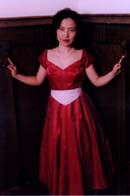

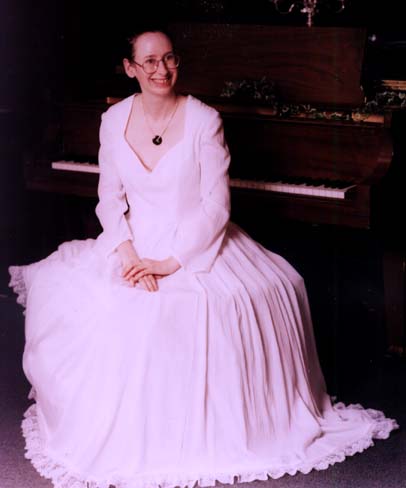

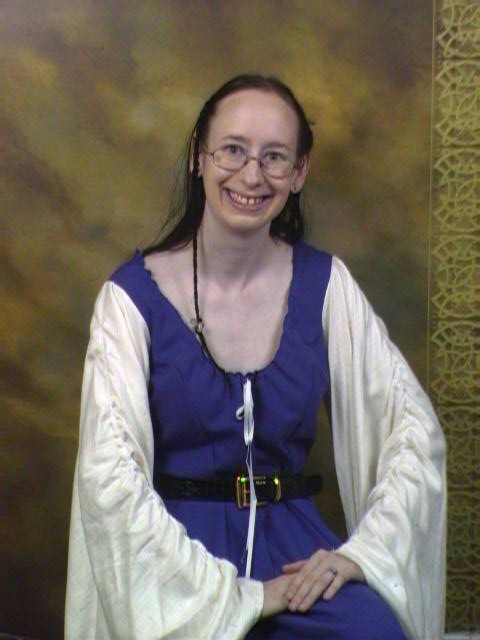
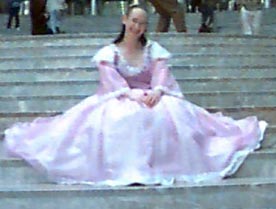

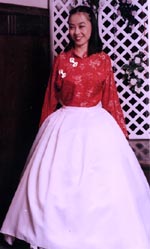
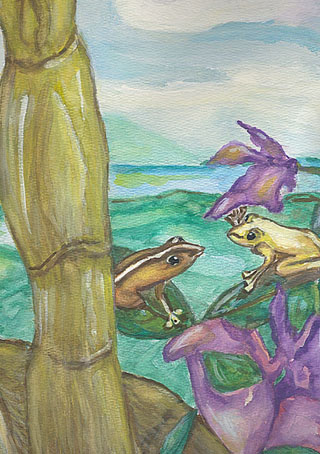










![]()

| Laurel A. Rockefeller | [email protected] | cell number: 908.720.7050 |
![]() Laurel A. Rockefeller
Laurel A. Rockefeller![]()

Chinese Wedding
Traditions In The 21st Century
By Laurel A. Rockefeller. Text from FAQ on whitejade.com from
1998 to 2002.
In a day an age where Chinese traditions are dying in favor of
Western values, it becomes increasingly difficult to maintain the
oldest traditions of one of the most ancient civilizations in the
world. For those wishing to maintain a connection to Chinese
traditions instead of settling for American ones, good
information is often hard to find. Here are answers to many of
the questions you have emailed WJD about concerning Chinese
weddings. You will find not only the basic answers (do I do this
or not--yes/no) but suggestions as to how to carry through these
traditions into a modern wedding context. Obviously in a time
when weddings are bigger and no longer held in the groom's home,
who now no longer spends his entire life living with his parents,
things have changed a bit!! In this FAQ you will find out how to
have your tradition in the real world we live in today. Wherever
possible we cite the source of each question.
Q1: Does the groom's family or the bride's family pay
for the wedding?
In China, the groom's parents gain a daughter and the bride's
parents lose one. As a result, in traditional times among Han
Chinese, the groom's family actually hosts the wedding--which is
held in his parent's home. The groom's parents are the one
celebrating because they are adding a member to their family and
gaining what most Chinese parents REALLY want: GRANDSONS. Paying
for the wedding is part of the "bride price" that the
groom's parents pay to the bride's family--who are suffering a
loss. Depending on the region in China, often the bride's family
would not even attend the wedding! Instead, the groom would make
an appearance with gifts for the bride's parents to compensate
them for their loss--then take the bride away for the wedding.
After the wedding, a visit would then be made by the couple to
her parents to show their respects and of course to allow the
bride some important transitional time with her family.
In a day and age where transportation is much more convenient and
possible and where the couple now lives away from both sets of
parents, much of this tradition of taking the bride from her
family has faded away--allowing the bride's parents and many more
of her family to attend the wedding, which of course has shifted
from the parents' home to another location. Today, instead of the
groom's parents having to host the entire wedding in their home,
the parents, if possible simply pay the rental for the location
the couple chooses--increasing their financial burden in part but
decreasing some of their responsibility in it.
Q2: Do Chinese have attendants?
Actually, no! Not traditionally. There were "helpers"
for the rituals of engagements and the wedding itself, but no
"attendants" per se. So if you're the bride or the
groom, do not feel like you must have bridesmaids or groomsmen.
These are strictly Western traditions! If you are going for
"strictly traditional" Chinese--or as close to it as
possible--then it's best to set up "helpers" instead of
bridesmaids and groomsmen.
Now of course the role of the Maid of Honor and Best Man in the
West IS as a helper--to help bride and groom dress, run essential
errands, make sure the legal papers are handled, everyone is
where they are to be on time, and everyone that has to be paid on
the wedding day is. So if you're worried that you cannot have
your best friend stand up with you and still follow Chinese
tradition--don't worry!! The number of helpers is the number of
people you feel you need in order to pull off your wedding. This
number is not fixed within Chinese tradition.
Which begs the question: if Chinese don't have attendants per se,
where do those Western traditions come from?
Most of the "traditions" that people assume have been
around for centuries are in fact less than 150 years old in most
cases. The American style wedding is based on the wedding of the
daughter of England's Queen Victoria who revived several ROMAN
traditions. Prior to 1885, WHITE WAS NOT WORN by the bride at
all! She actually wore her best gown. It's ASIAN women who have
always had a BRIDAL COLOR: RED.
In Roman times, the best friends of a bride would dress exactly
like her to fool evil spirits and disguise the bride's identity
in hopes of protecting the bride in the new marriage. This is why
in the West, bridesmaids not only exist but wear gowns similar to
the bride's. For wealthy women in medieval Europe, bridesmaids
were often servants or played the role of servants on the wedding
day--to help the bride dress and attend to her hair and makeup.
In that way, western bridesmaids and Chinese helpers are much the
same. But from about 300-1885 CE, these bridesmaids never wore
the same as the bride--all the women in the bridal party simply
wore the best gown she had. If she were wealthy, it would be a
new gown that was never worn; otherwise her cleanest, best
looking dress.
Western groomsmen traditions stem out of the idea of protecting
the groom's interests by using force of arms to ensure that the
groom and only the groom got the bride in the end--that she would
not be kidnapped nor could run away and would actually marry the
groom! There is one Western tradition where the best man or other
groomsman must actually win a sword duel for the groom to be
allowed to marry the bride. This tradition is maintained in form
by the United States armed forces.
If being CHINESE on your wedding day is important, then one
important Chinese touch is not to refer to your helpers as
bridesmaids or groomsmen. CALL THEM HELPERS--these are simply the
people who are helping you get things done. Eliminate the idea
that one helper is superior to another or has special duties that
the others don't have (e.g., Maid of Honor, Best Man) and take
advantage of the flexibility that Chinese culture gives you.
Here's how you might choose to frame your program for your
wedding guests (names are hypothetical):
| Bride: Jiang An-Mei Bride's Helpers: |
Groom: Li Qiong-zhang Groom's Helpers: |
Officiant: Shifu Mao Li-Zheng Musicians: |
Following this format instead of the
"traditional" Western format allows you to not only be
Asian cultured, but to observe customs that are truly ancient in
nature.
Q3: When do I present the "Twelve Gifts" to
my bride?
The presentation of the twelve betrothal gifts is the first of
six ceremonies that must be performed prior to the wedding. It is
the stage after the letter of betrothal has been issued and
accepted and it is the stage that actually accepts the betrothal
offer. Once the bride's father accepts the offer, the groom's
family sends the gifts--which may or may not actually number
twelve--which is the number the Taiwanese use but is by no means
the true requirement. Bolts of silk, shoes, gold jewelry, and
other clothing items are the typical traditional gifts presented.
So are special foods with symbolic value.
Equally part of this Twelve Gifts tradition is the return of
gifts to the groom's family, which do not necessary have to be
the same gifts, especially the silks which are for the bride to
use for her clothing as a married woman. The traditional standard
for the silk is enough for a lifetime--but this is only for the
wealthiest of circumstances. If the gift is more symbolic than
practical, probably ten yards or meters would be the right
amount--which is enough for the bride to commission one or two
dresses or gowns to be made with it. If the gift of silk is
intended for the bridal gown, be aware that a western style
wedding gown could easily take more than ten yards of one fabric
alone--without the lace, beading, etc. associated with many
bridal gowns.
If the engagement is nine months to one year in duration (as many
weddings today are), the groom's family might consider making
this traditional gift of silk for use as the bride's Chinese
wedding gown since most bridal shops or other Chinese gown
providers need at least six months to complete the gown.
Q4: Do Chinese wear engagement and/or wedding rings?
Strictly traditionally--not per se. In modern times, it's
extremely popular. What I mean by not per se is because of the
jewelry element in the Twelve Gifts exchange. If gold jewelry is
given to the bride and if part of the gifts are returned to the
groom, there is absolutely no reason why this jewelry would or
ever did exclude rings. Jade was always a part of this exchange,
so an engagement ring of jade set in gold (worn on any finger)
was extremely likely. Likewise, there is no reason to believe the
bride's family would not also give the groom a ring of gold that
perhaps also contained jade.
This aspect of the Twelve Gifts tradition is usually ignored by
consultants on Chinese weddings--but it should not be. Chinese do
wear these rings, even if for a different reason than westerners
do. The western tradition is rooted in the ring as a sign of
OWNERSHIP and in previous centuries ONLY the wife would wear a
ring. Of course in the 20th century it became politically
incorrect to make the wedding ring a symbol of legal possession,
so the custom evolved to include women giving a wedding ring (but
not an engagement ring) to her groom for the reason of the circle
as a symbol. Attend most Western weddings and this in fact will
be the reason stated in the ritual.
If you want to be strictly CHINESE about it, it's fine to wear
the rings as long as a color of jade is the primary stone mounted
in it, but the ring exchange ritual within the wedding itself
would not be. Instead, a Chinese couple who has decided to wear
rings should come into the ceremony wearing them (given that the
exchange happens in the first of the six betrothal rituals) and
the Officiant should mention that they have exchanged rings in
accord with the First Rite of Betrothal as part of the Twelve
Gifts exchanges.
Q5: I'm not Han Chinese--how much of this applies to
me?
When consulting most information about Chinese weddings, nearly
everything you read WILL be about Han customs--which were adopted
as mainstream Chinese societal norms. However if you are not Han
by blood or culture, you may have more options. For example, in
Manchu traditional weddings where the social structure was more
by clans, villages, and tribes, the financial responsibility was
shared throughout the village and often it was up to the village
to decide the details of a wedding depending on the individual
social status of the bride and groom. Overall, Manchu weddings
were much simpler than for their Han counterparts and necessarily
had to be in a nomadic society that did not value the material
world as much as the spiritual world. The most important element
in a Manchu wedding was religion and the sincerity of affection
between the bride and groom--if the couple did not want to marry
each other, it could not take place. This is in stark contrast to
the Han marriage which was mostly based on the joining of two
families for economic, political, or social status
benefits--where the happiness of the couple was considered a
luxury and not essential--and where ritual was used as a
mechanism for joining these two families.
If you are a minority ethnic Chinese, you actually have the
option of picking which the Han customs you wish to follow. For
the most part, most minority Chinese weddings are a fusion of Han
customs with their own. So enjoy your freedom! You can skip some
of the Han customs that you don't like or simply are not able to
fulfill.
Q6: I found two little jade cups in a catalog that are
called "Chinese Jade Wedding Cups." Is there really
such a thing? --question by Darlene Bosela
Like so much of what is in American popular culture-- much of
what they claim is Chinese or is Chinese for such and such is
simply a marketing tool. I went to the site to see the cups for
myself. There is nothing Chinese about it. While jade IS sacred,
this product is not exactly being marketed as such. it's another
"buy the mysteries of the orient" idea.
If it WERE reputable, it wouldn't be on a website carrying many
cultures within it. It would be on an exclusively CHINESE site.
The photo of the Chinese guest book you see in the FAQ's is from
a Chinese bookstore in Manhattan--though of course I gleaned it a
long time before I actually moved out East. I would love to find
that site again now I live in the area. Instead, you should look
within Chinatown based sites.
If you are looking for cups for the ritual exchange of wine, your
best bet is actually something fairly common, but may be hard to
find something "exclusively for weddings"--which is
better anyway because you KNOW that half the stuff marketed as
"just for weddings" has a much higher price than
anything not such marketed. A Chinese wine set has a small
decanter that holds maybe 4 oz of liquor or wine with four tiny
cups holding maybe half an oz. This is because Chinese usually
drink a very hard liquor--no doubt you have heard of rice wine.
As a Manchu, for ceremonial purposes, I fill my decanter with a
mixture of creme de menthe or creme de cacao and milk--a drink a
restaurant taught me when they didn't have the means to make a
grasshopper. It resembles fermented mare's milk, which is what
Mongols and Manchus drank--and probably tastes better! the
patterns you will want to consider would be "fu"
meaning "wealth", shuang xi "double
happiness" which is exclusively for weddings--it's the
wedding character, or actually any pattern that you really like.
There is no reason why you should get a set that you will only
use for the wedding. You SHOULD get a tea set for the tea
ceremony between the wedding and the reception. Any of those
patterns mentioned above plus dragons or phoenixes would be good.
The dragon represents the Emperor and on your wedding day, the
groom is emperor for the day. The Phoenix is the Empress or the
bride on her wedding day. if you can find either pattern, it
would look lovely and be symbolic. Most Chinese grocery stores
and Chinese gift shops will sell both winesets and tea sets as
these are considered essentials for the kitchen.
Another, simpler idea would be simply to find a SOLID RED! Red is
the color of happiness and your wedding should be filled with
red. If you have the ability to sew or want to get creative, you
could even take some dragon or phoenix brocade and sew a cover
for the wine decanter just for the wedding and then remove it
afterwards--giving yourself a nice souvenir when you're done
while allowing yourself to have something more
"weddingish" at the ceremony.
| Laurel A. Rockefeller | [email protected] | cell number: 908.720.7050 |










![]()
